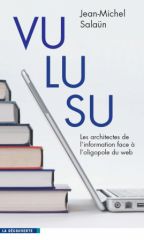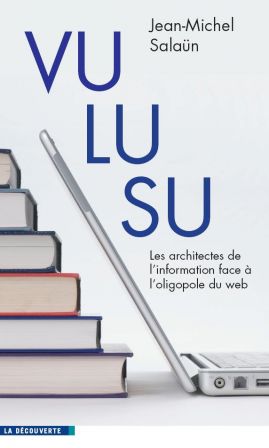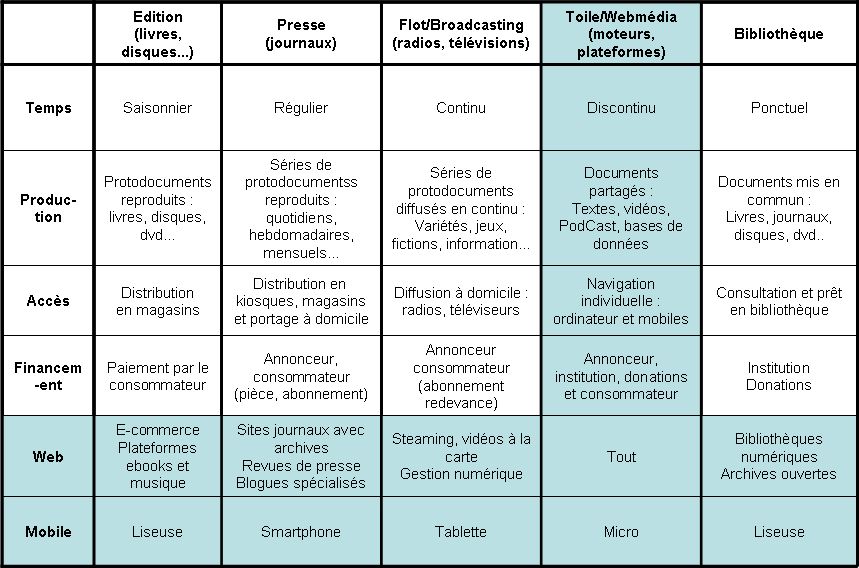 (Seen, Red, Known: Information Architects and the Oligopoly of the Web)
Feb 9th 2012
(Seen, Red, Known: Information Architects and the Oligopoly of the Web)
Feb 9th 2012
From the introduction:
(...) The first chapter points out that the library as a collector of documents is by far the oldest of the media. Its model is being challenged by digital media, but they are not the first to do this. Movable type printing had already deprived it of its functions of reproduction and circulation of the books. Conversely, the library was, consciously or not, one of the first sources of inspiration for the development of the Web and, ironically, some of the digital players have made use of its model for very profitable businesses even if it had always been based on a non-market ecosystem.
The second chapter returns to the concept of document to show that if its two functions of transmitting and of proving are ancient, the document has become a familiar object only in the nineteenth century. Its emergence is a contemporary development of modern science. Its peak coincides with the systematization of the library model. As often in the humanities and social sciences, it is when an object appears to be disappearing that the greatest efforts to understand it are made. While analyzing the break-up of the document through digitization, a group of researchers, signing the pseudonym Roger T. Pédauque, proposed to clarify the nature of the document according to its three dimensions: form, text or content, and medium or transmission mode, in other words as it is seen, read and known. This threefold partition will be our framework of reflection in the rest of the book.
The third chapter shows how the documentary organization, hierarchical and systematic as it has been since the nineteenth century, dominated the twentieth century while perfecting itself, and became a mirror of the society emerging from the industrial and scientific revolution. The construction of the Web under the leadership of the W3C has led to a radical documentary re-engineering that enables the user and modifies the document in its three dimensions. Pushed to its limit, the process reverses our truth system by transforming the individual himself into a document. The ongoing documentary re-engineering is consistent with the emerging values of postmodern society.
For published documents, three markets were opened, only three, corresponding to the three dimensions of the document: the publishing market, including the sale of goods (form), the library, including the sale of access services (text) and the show which is the sale of attention (medium). The Web is between broadcasting and the library, as the press was between publishing and entertainment in the nineteenth century. In the evolution from publishing to broadcasting via the press and the Web, a gradual change is occurring in the management of the space-time aspect of the production and consumption of published documents as regulated by the pricing system. In addition, the Web imposes itself to the media and makes use of their cross accessing and permanent archiving capabilities to transform them into memory industries. It then becomes possible to think over the traditional cultural economy categories to highlight the importance of the economy of the document. This new reading of cultural industries based on a document entry is the subject of the fourth chapter.
Our three-dimensional analysis of the document allows last (fifth chapter) to throw some light on the strategies of the major industrial players on the Web and to compare them with the intentions of the engineers and the wishes of Internet activists, while noting the distance between the utopias and the industrial achievements. Locking mechanisms and leasing agreements were set up focusing, once again, on one or the other dimension of the document: the form by controlling objects (Apple), the content by navigating through texts with "industrial readings " (Google), or the relationship (Facebook), with the more or less successfully aim to grab the maximum profit.
The book ends with the need for new information professionals, able to understand and make use of the changes underway to build and manage new documentary infrastructures. The iSchools in North America today train professionals skilled in both computer science and information science. These new professionals are sometimes called Information Architects. In French, I suggest using the term "archithécaires" to indicate those new skills, rooted in the knowledge of library science, but greatly exceeding it.
In summary, starting from the history of the document and its three-dimensional analysis, the book offers a different perspective on what is being discussed on the web. It shows that the invention of the web by Briton Tim Berners-Lee is taking over the systematic indexing efforts launched in the late nineteenth century, changing the document itself in its three dimensions: form, content and medium. The Web is then like any other media: it follows the model of the library and of broadcasting to meet the documentary aspirations of a society that has deeply changed. The old media themselves are expanding their vocation by becoming "memory industries" through the constantly ongoing and public digital archiving of their production. The newcomers, Apple, Google, Facebook, each favor a different dimension of the document, trying to take a dominant position in the construction of a "neodocument." (...)
See also (English subtitles) :

